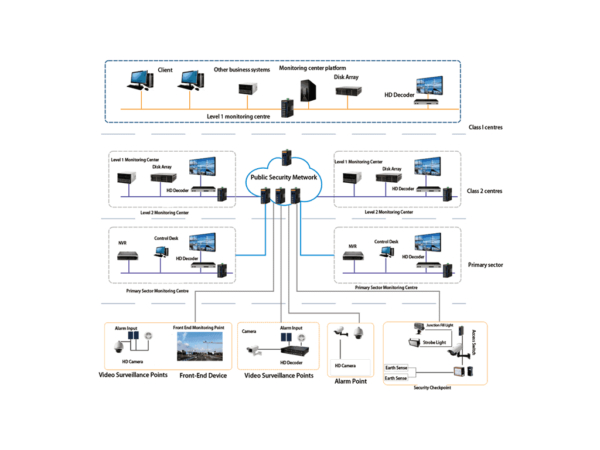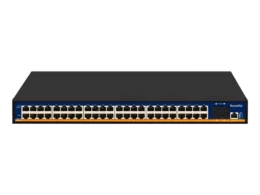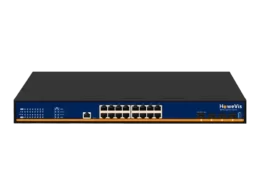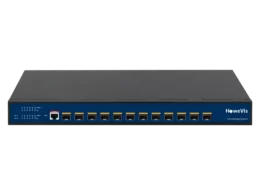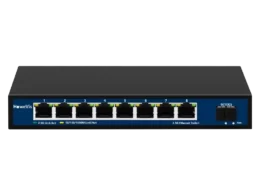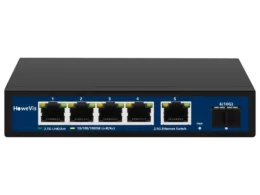In understanding whether to use the core switch, let’s first understand the use of the core switch.
The role of each layer of the switch
Access layer: The access layer is directly connected to the user’s computer and makes various network resources to access the network. Provides the ability to access application systems in the local network segment. It mainly addresses the inter-access needs of adjacent users and provides sufficient bandwidth for these accesses.
Aggregation layer: The “intermediary” between the network access layer and the core layer. The aggregation is done before the workstation accesses the core layer to reduce the load of the core layer equipment. The aggregation layer has many functions such as policy implementation, security, workgroup access, routing between virtual local area networks (VLANs), source or destination address filtering, etc.
Core layer: The primary purpose is to provide fast and reliable backbone data exchange through high-speed forwarding communication.
What is a core switch?
A core switch is not a switch, but a switch placed in the core layer (the backbone part of the network) is called a core switch. Generally, large enterprise networks and Internet cafes need to buy core switches to achieve robust network scalability to protect the original resources. We will use many computers on the core switch, and basically, under 50 units do not need to use the core switch. A router can be. If it is a small LAN with a few computers, a small 8-port switch can be called a core switch!
A core switch is a layer two or layer three switch with a network management function and robust throughput in the network industry. If a network of more than 100 computers wants to run stably and at high speed, a core switch is essential.
Why use the core switch?
There is no need to use core switches for less than 50 roads, and layer two switches plus routers can be used. And about 100 routes, it will use the core switch efficient routing function.
First of all, 100-way monitoring belongs to a medium-sized network. The network to bear the pressure is not too big and not too small. At any time, there may be a data delay.
The core switch is generally a three-layer switch (one of the main functions of the core switch is VLAN routing so the core switch will require the use of a three-layer switch).
Security
If the core switch is not used, all the monitoring is in one subnet. A broadcast storm may form enough to bring down the entire network, and security is also inferior.
High Efficiency
The Layer 3 core switch implements the routing function of IP through hardware, and its optimized routing software makes the routing process more efficient. Solve the speed problem of traditional router software routing. As mentioned above, the three-layer core switch also has a vital role in ensuring high efficiency in connecting subnets.
The 100-way monitoring, to reduce the number of computers in the same network. Inevitably, it will need to divide the VLAN to divide the number of IP subnets further to prevent broadcast storms. The task between the subnets also depends on the three-layer switch is the “mainstay.”
Scalability
Layer 3 core switches have scalable lines. The Layer three switches connecting multiple subnets, subnets, and Layer 3 switch modules to establish a logical relationship do not require traditional routers to increase the port. If you need to increase the network equipment due to various expansion module interfaces reserved for the original network layout the original equipment can be directly expanded without equipment protection, protecting the existing resources.
High security is also an essential aspect of Layer 3 switches that attracts people. Layer 3 switches are at the core of the network layer and are indeed the object of network hacking. On the software side, a highly reliable firewall is configured to block unidentified packets. You can access the list through the access list settings that can be restricted to internal users to access some unique IP addresses.
What is the difference between core switches and standard switches?
The difference in ports
The number of ports of ordinary switches is usually 4-8, and most of the ports are Gigabit Ethernet or 100 Gigabit Ethernet ports. The primary function is used to access user data or aggregation of some access layer switch data. This switch can be configured up to VLAN simple routing protocols and some simple SNMP and other functions. The backplane bandwidth is relatively small.
The core switch has many ports, usually modular, and can be freely matched with optical ports and Gigabit Ethernet ports. Generally, core switches are three-layer switches, which can be set up with various advanced network protocols such as routing protocols/ACL/QoS/load balancing. The main point is that the core switch backplane bandwidth is much higher than that of ordinary switches, and there are usually separate engine modules as a backup.
The difference between the user connection or access to the network
Usually, the part of the network directly facing the user to connect or access the network is called the access layer. The region located between the access layer and the core layer is called the distribution and aggregation layers. The access layer intends to allow end-users to connect to the network, so the access layer switches have low cost and high port density characteristics. The aggregation layer switch is the point of convergence for multiple access layer switches, which must handle all traffic from access layer devices and provide uplinks to the core layer. Therefore, the aggregation layer switches have higher performance, fewer interfaces, and higher switching rates.
The backbone part of the network is called the core layer. The primary purpose of the core layer is to provide an optimized and reliable backbone transport structure by forwarding traffic at high speed, so the core layer switch applications have higher reliability, performance, and throughput.
